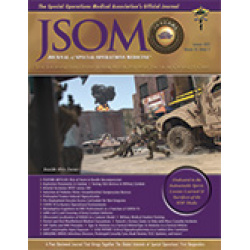The Effect of Prehospital Blood Transfusion on Patient Body Temperature from the Time of Emergency Medical Services Transfusion to Arrival at the Emergency Department
Mannion E, Pirrallo RG, Dix A, Estes L 99(5). 50 - 57 (Journal Article)
Background: Transfusion of blood products is life-saving and time-sensitive in the setting of acute blood-loss anemia, and is increasingly common in the emergency medical services (EMS) setting. Prehospital blood products are generally "cold-stored" at 4°C, then warmed with a portable fluid-warming system for the purpose of preventing the "lethal triad" of hypothermia, acidosis, and coagulopathy. This study aims to evaluate body temperature changes of EMS patients receiving packed red blood cells (PRBC) and/or fresh frozen plasma (FFP) when using the LifeWarmer Quantum Blood & Fluid Warming System (LifeWarmer, https://www.lifewarmer.com/). Methods: From 1 January 2020 to 31 August 2021, patients who qualified for and received PRBC and/or FFP were retrospectively reviewed. Body-temperature homeostasis pre- and post-transfusion were evaluated with attention given to those who arrived to the emergency department (ED) hypothermic (<36°C). Results: For all 69 patients analyzed, the mean initial prehospital temperature (°C) was 36.5 ± 1.0, and the mean initial ED temperature was 36.7 ± 0.6, demonstrating no statically significant change in value pre- or post-transfusion (0.2 ± 0.8, p = .09). Shock index showed a statistically significant decrease following transfusion: 1.5 ± 0.5 to 0.9 ± 0.4 (p < .001). Conclusion: Use of the Quantum prevents the previously identified risk of hypothermia with respect to unwarmed prehospital transfusions. The data is favorable in that body temperature did not decrease in critically ill patients receiving cold-stored blood warmed during administration with the Quantum.


 Español
Español 



